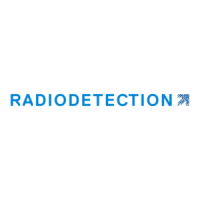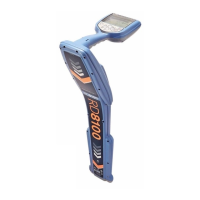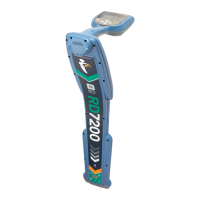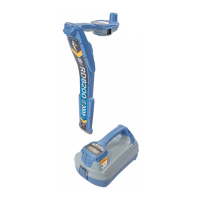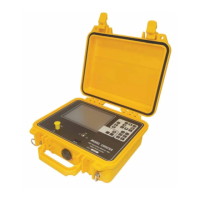RD4000 Locating System User Manual
Page 65
Unwanted signal coupling
Unwanted coupling of the signal from the target line to another nearby line is one of the most common location
problems. It leads either to an error in the marked position and depth of the target line or to marking the wrong
line. A certain degree of coupling is unavoidable in many situations but there are ways in which a careful user
can reduce coupling and increase location reliability.
! Avoid applying the signal by induction. The signal may be coupling to
more than one line directly from the transmitter. Use the signal clamp
where possible.
! Identify points where lines may be bonded or in close proximity to
each other. Work toward these points rather than away from them.
For example, if gas and water pipes are bonded within a building,
apply the signal at the valves or access points in the road rather than
in the building.
! Reduce coupling to a parallel line by using a low signal frequency
where available.
! Return signal flowing on another line. Use a double-ended
connection to by-pass the ground return if possible.
! Choose a signal application point where the line is furthest from other
lines and not a congested area.
! When using single-ended connection, site the ground stake as far
from the target line as possible and away from other buried lines.
! Avoid using existing structures for ground connections; other buried
lines may be bonded to them.
A bad ground connection or just laying the ground lead on the surface at
right angles to the line may result in less coupling than a good ground
provided long distance tracing is not required.
Manhole cover as ground
Sometimes when locating, it is not possible to insert the ground stake into the earth, for example, when locating
on hard ground such as roads. In this case, the ground return can be made by attaching the ground lead to the
metal frame of a manhole.
Using lighting columns
Direct connecting to a metal, street-lamp column is almost as effective as connecting to the cable sheath itself.
Normally the cable sheath is bonded to the metal column, therefore a simple connection onto the column
enables the user to locate the street lighting quickly and safely without having to call out a technician from the
lighting company.
If the lighting column is made from concrete make the transmitter connection to the cable sheath unless the
cable is earthed to the inspection doorframe. Connection to the cable sheath applies the transmitter signal for a
considerable distance enabling the receiver to trace cables feeding illuminated street furniture as well as other
street lights.
WARNING. THE LIVE CABLE CONNECTOR IS FOR USE ONLY BY OPERATORS LICENSED OR
PERMITTED TO WORK ON LIVE CABLES.

